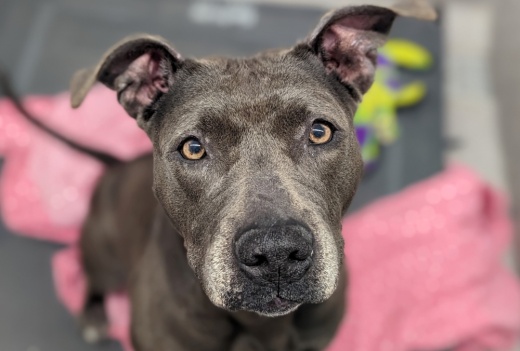The study is the first step in tying in Georgetown to the shelter, which takes in animals from the cities of Round Rock, Cedar Park, Leander and Hutto. As part of the agreement, Georgetown will cover the costs—$50,000—in developing the study, concept plan and cost estimates for expanding the regional shelter.
Jackson Daly, Georgetown’s assistant public works director, said the city is in need of a new shelter and is already spending close to $800,000 a year on operations at the existing facility.
“We were thinking, ‘Is it more smart to use those dollars to partner with the county,’” he said. “So we would bring out capital dollars to expand your shelter and the incentive for the county being you’re not having to do that capital outlay to do the expansion.”
Daly said the expansion would not only account for Georgetown’s addition, but also for forecast growth of the county’s needs as a whole.
This is the first step of several in the process to fold Georgetown into the shelter. If the study shows it will be practical for all of the participating entities, the city would call a bond election in November to acquire the funding. If the bond passes, a new agreement would be drawn up to allow Georgetown to formally join the regional animal shelter.
In 2019, the WilCo shelter completed a $10.5 million renovation and expansion, adding a new adoption center in a separate two-story building with 64 additional canine kennels and 93 feline kennels. The project also included a renovated surgical area, laundry room, and updates to air conditioning and plumbing.
Commissioners were divided on the study, which garnered the approval of Precinct 1 County Commissioner Terry Cook, Precinct 3 County Commissioner Valerie Covey and Precinct 4 County Commissioners Russ Boles. County Judge Bill Gravell and Precinct 2 County Commissioner Cynthia Long opposed the measure.
Long cited capacity concerns, adding the shelter was full the day the latest expansion opened. She also said the city of Georgetown declined joining the shelter twice during that time.
“The county has borne more than 50% of the cost for this,” she said. “It’s been on county land. When the heat comes about this, it comes to the county. It does not come to those other cities, and this is not one of those mandatory things that the county has to do.”
The facility regularly struggles with capacity issues. A no-kill shelter, the WCRAS took in and cared for 510 new animals in February. According to staff, the shelter has experienced critical volumes of animals since May 2022.
Covey said as the county’s population has grown, so has the number of stray animals.
“It would be great if we had responsible pet owners in our county that did not come to the county and try to return animals,” she said. “We have plenty of animals, thank you very much. We would love for you to adopt more of them.”
The WCRAS has increased its programs in recent months to encourage residents to adopt or foster animals. In February, staff asked for community help when the shelter reached 190 dogs, making it difficult to provide a high level of care.
Gravell said he is concerned about the resources and staff the shelter would need to maintain the additional room.
“We’ve got to have manpower, and none of it is cheap or free, except the volunteers that work tirelessly,” he said.
In addition to concerns about space, staffing and costs, Long and Gravell said they were worried about making a decision before bringing the idea to other cities making up the regional shelter. However, Boles and Cook argued the study would provide the entities with information it needs to make a decision.
“I don’t have a problem with the feasibility study preceding trying to talk the other cities into thinking this is a good idea,” Cook said. “It is the feasibility study which will demonstrate whether it’s a good idea or not.”





